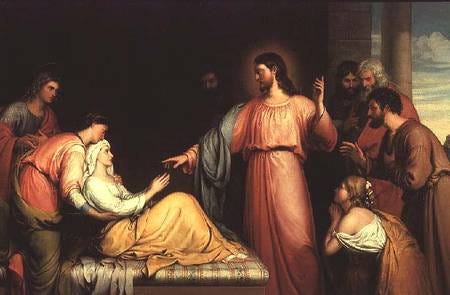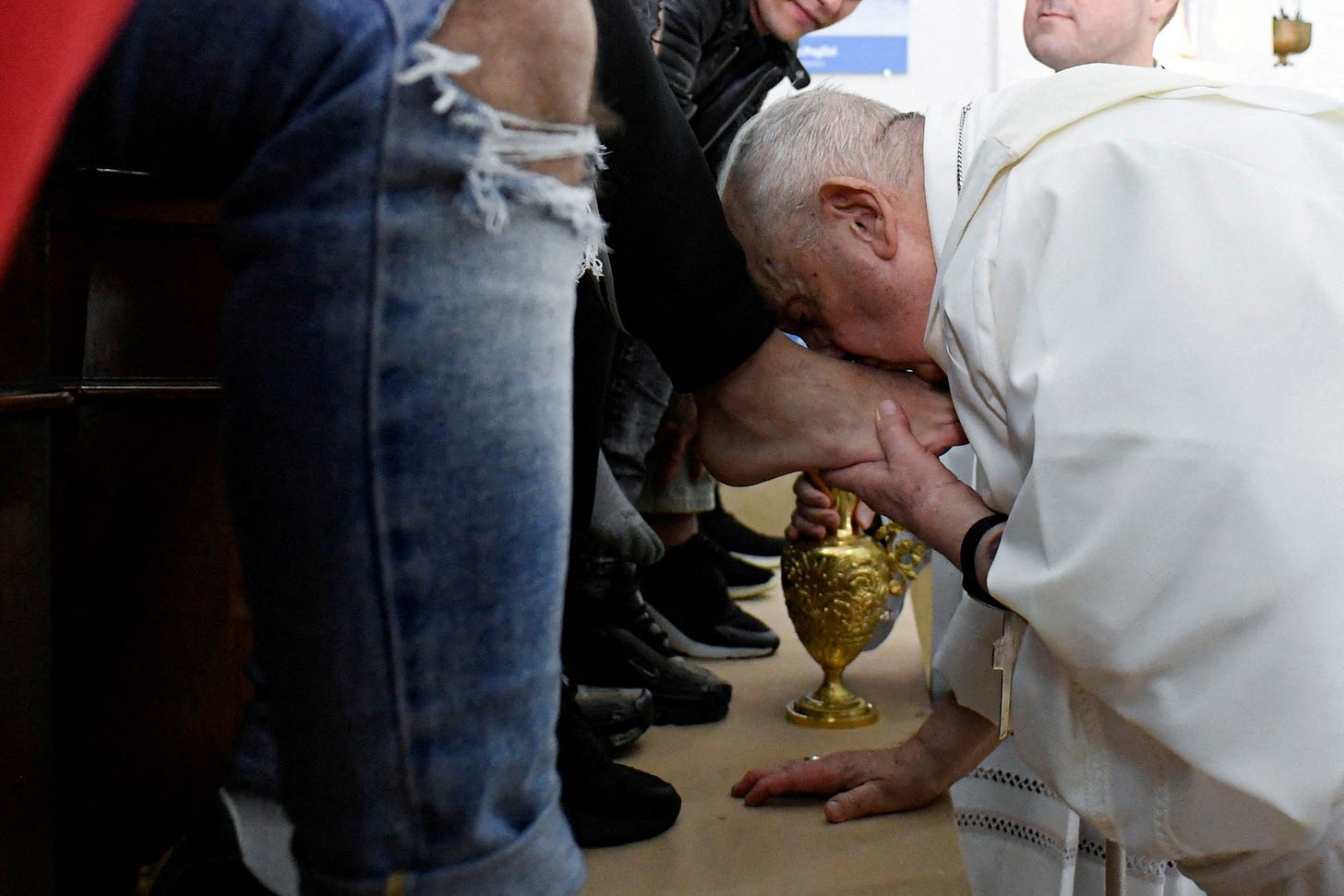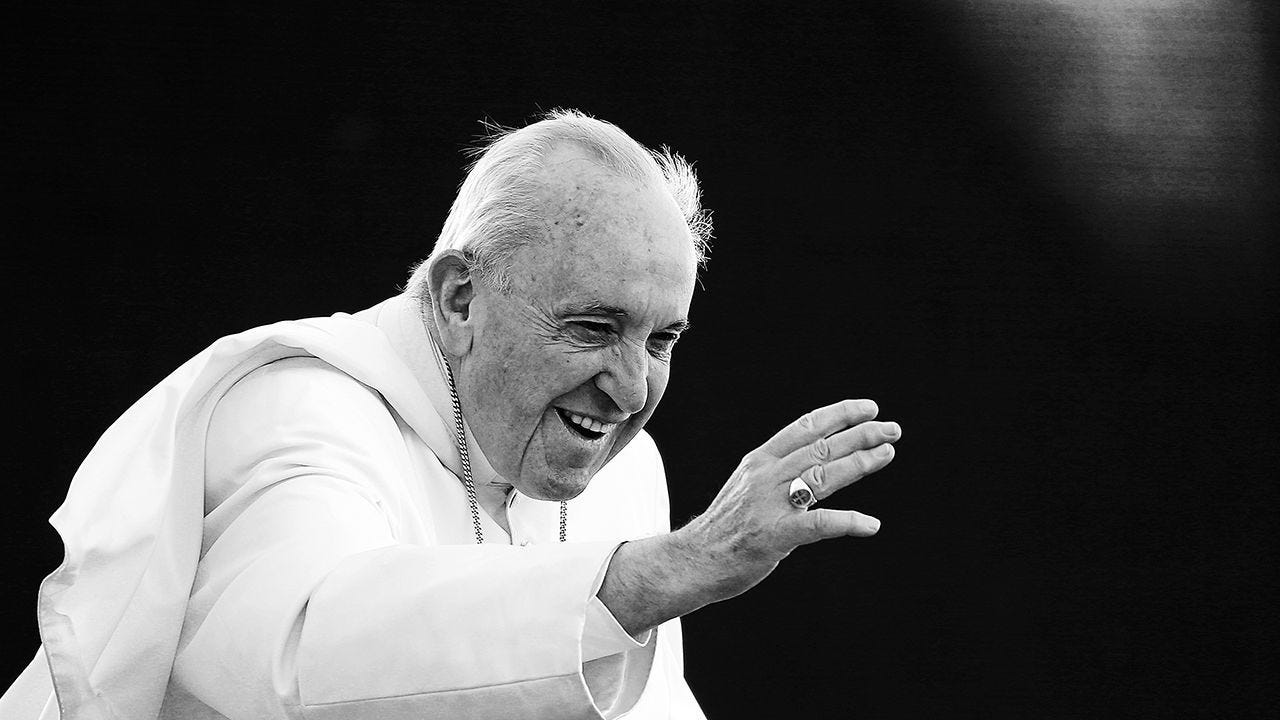Photo compliments of David Travis.
The color of devotion
“What color is it?” the blind man asked.
I hesitated, “Bright ivory with brown trim.”
“I see,” he added. “It looks nice.”
Daylight was fading as I sat in the passenger seat of the Cadillac Seville parked beside the narrow sidewalk to his home. The car sat on its four rims, the tires flattened and disintegrating in the East Texas sun. He liked to sit behind the wheel and remember those days when he could still drive, the days before he was blind.
J.T., short for “Joshua Thomas,” was afflicted with Diabetic Retinopathy, a catastrophic consequence to his untreated diabetes and high blood pressure. Hypertension slowly destroyed the microscopic blood vessels in the retina. By the time I met J.T., his world had gone completely dark.
A longtime employee of a major oil drilling company, where he operated an industrial forklift in the equipment yard, the gradual loss of his sight cost him his job and sole income. Goodwill Industries retrained him as a masseuse, and he became a favorite amongst men who frequented the downtown YMCA. One of his regular customers was a parishioner at the church I served. He recommended that I assess J.T.’s house for possible repairs. Although the parishioner had never visited the house, he suspected it was in “bad shape.”
“Bad shape” turned out to be a woefully inadequate description, which I learned I when I made an assessment of J.T.’s house with the leadership team of the Carpenter’s Guild. The Guild was a ministry we had formed at the church a year earlier. Named for Jesus, the great carpenter, the group repaired, restored, and painted the homes of those unable to do so themselves. To this day, thirty-seven years later, I have never been part of a ministry that harnessed the talents and interests of men to match the Carpenter’s Guild. Lawyers, shopkeepers, teachers, warehousemen, physicians — men from all walks of life — came together Saturday after Saturday to work with their hands, as many had done with their fathers and grandfathers as boys.
J.T.’s house would be a construction challenge, as well as an onerous trial for our senses. Entire rooms were filled with rotting clothes and furniture, as well as with the rank detritus of dead rats. We spared no details when making the call for workers. The surprise for the leadership team was the thirty women who showed up to help us clean out J.T.’s house and prepare a midday meal. Each one of us on clean-up duty donned a bandana across our nose and mouth, lest we throw-up our breakfast.
Hauling, hammering, scraping, painting, and scouring continued until well after 7 PM. As the fifty or so workers began to depart, I walked through the house in a state of shock. The Carpenter’s Guild had provided J.T. with a sturdy, brightly painted, and scrubbed clean house. Escaping the amalgamated vapors of ammonia and Pine Sol, I strode to the old Cadillac and sat beside J.T.
“What color is it?” And I told him, knowing he could see it in his mind’s eye.
A tale of two cities
Rejected by enraged home folks in Nazareth who failed to see God’s ambitious plan for his ministry, Jesus escapes twenty miles further inland to Capernaum on the north shore of the Sea of Galilee. Once again entering the local synagogue on the Sabbath day, Jesus begins to undertake the work prophesied by the Prophet Isaiah of releasing those who are captive, proclaiming good news and to some the recovery of sight (4:18-21). The fireworks begin immediately.
Jesus is busy teaching the mesmerized synagogue crowd, when a loud guttural voice cries out from within one of the congregants: ‘Let us alone! What have you to do with us, Jesus of Nazareth? I know who you are, the Holy One of God’ (4:31-34). Demons are the first to recognize who Jesus really is. We should not be surprised. Recall that he is no sooner baptized than the devil feverishly tries to derail Jesus’ ministry (4:1-12). The powers of darkness know very well who has the authority to defeat them. Their fear was well-founded, for Jesus commands the spirits that possess him, ‘Be silent, and come out of him’ (4:35). Jesus releases the man from his dark enslavement with nothing more than his words.
Luke notes twice that Jesus speaks with authority — both in his teaching and in his casting out demons (4:32 & 36b). Days before when Jesus was being tempted in the wilderness, the devil showed him all the kingdoms of the world, and offered, ‘I will give you all their authority and splendor…if you worship me’ (4:5-7). Jesus apparently did not need his assistance and instead uses his God-given authority to begin emptying the devil’s house! (Matthew 12:28-29)
In much the same way, Jesus delivers Simon’s mother-in-law from her illness. Most English translations read, ‘Simon’s mother-in-law was suffering with a fever’ (4:38b). However, the Greek is much more illustrative. She was not merely suffering but “held captive or kept in custody” — synechō — by the fever. Seeing her, Jesus ‘rebukes’ the fever. The Greek here is epitimaó, which is the same verb Jesus uses in Nazareth when he promises to release the captives. We should not quickly dismiss this view of disease as being archaic. Consider the unprecedented surge in mental illness that we are experiencing in the U.S. and across the developed world. In Capernaum, we begin to see that illness and death are consequences of humanity’s fall. Jesus is the vanguard of the new creation. The last book of the New Testament delineates what Jesus’ work in Capernaum presages — ‘He will wipe all tears from their eyes, and there will be no more death, suffering, crying, or pain. These things of the past are gone forever’ (Revelation 21:4).
One aspect of the mother-in-law’s healing that I have heretofore found rather humorous is her reaction to the miracle: ‘Immediately she got up and began to serve them’ (4:39). I imagine Jesus telling her, “Okay, woman, you’ve been lounging around long enough. Get up and fix us some supper.” Looking deeper than our 21st century critique, her reaction is hardly comical. Jesus restores the woman to her life. The fever “captured” her, keeping her from fulfilling her purpose. The succession of people Jesus heals do not only recover from their illness, injury, or demonic possession, they also recover their lives. At the same time, the mother-in-law’s healing restores table fellowship, which becomes a mainstay of Jesus’ new community.
Christ Healing the Mother of Simon Peter’s Wife, by Peter Bridges, 1839, Birmingham, Alabama Museum of Art
At sundown, which marks the end of the Sabbath according to ancient Jewish timekeeping, a crowd of neighbors who were sick with various diseases gather around Simon’s house. Apparently the news about Jesus’ healings have spread all about that fishing community, and with the Sabbath over, they feel free to move about. Again, however, the demons throw quite a hullabaloo when Jesus casts them out with the laying on of his hands: ‘You are the Son of God!’ (4:40-41). The demons know very well who Jesus is and announce his true identity in horror — the Holy One of God and the Son of God. Luke is drawing a damning comparison here with the people of Nazareth who only see Jesus as Joseph’s son (4:22). The demons perceive Jesus in abject terror, whereas the hometown crowd is entirely blind to his identity.
Jesus is not keen on the demons’ recognition of him. He rebukes them a second time, striking them silent. Why? He does not want the people to hail him as the Messiah until he is crucified. Only then will they begin to understand the crucial and inescapable work of the Son of God. In every way, Jesus is intent on fulfilling Isaiah’s prophecies about him rather than playing to an adoring crowd. He will adopt for himself the prophet’s horrific prediction for Israel’s Suffering Servant: ‘He was pierced for our transgressions, he was crushed for our iniquities; the punishment that brought us peace was on him, and by his wounds we are healed’ (Isaiah 53:5).
The healings and exorcisms completed, Jesus leaves the village at sunrise and goes to a deserted place to be alone. Predictably, the crowds pursue him and want to prevent him from leaving them (4:42). The Greek word for “prevent” is katechó, which actually means “to possess or restrain.” While Jesus releases those from the clutches of disease and demons, they are feverishly determined to possess him. Once more, we have a baleful comparison with the rabble from Nazareth who tried to throw Jesus off a high cliff, while this mob from Capernaum now want to posses him. Jesus, however, escapes their clutches just as he escapes his pursuers in Nazareth. He must proclaim — in words and deeds — the good news of the kingdom in other Jewish cities, too, because that is the purpose for which he was sent (4:43).
A tale of two men
Words and deeds is how Pope Francis’s life is being rehearsed on every news outlet. A week after his death, we continue to hear about his uniquely brave witness. To begin with, he was the first non-European Pope elected in 1,200 years and the first ever from the Americas in the Southern Hemisphere. Neither his ethnicity or country of origin stands out as much as the way he lived his life. Declining all princely trappings and accoutrements, he refused to live in the papal palatial quarters and chose instead to reside in an apartment. He passed on special cuisine and opted to eat in a cafeteria. In preparation for his death, he ordered that his body not be elevated as was customary. His list of step-downs was lengthy and drove home the message that the Vicar of Christ must emulate the one he serves, Jesus Christ.
Some are disappointed that Francis did not make sweeping pronouncements concerning homosexuality, divorced persons, the ordination of women, and a married priesthood. Others are equally disappointed that he openly discussed all of these matters with understanding and compassion. Those close to him realized that he would not allow pressing cultural or theological issues to break apart the communion he loved.
Instead, Francis demonstrated the immense love of our Savior to the world. Who could forget the succession of Maundy Thursdays that he washed the feet of inmates and those with disabilities. Every year of his pontificate, save 2020 at the height of the Covid-19 pandemic, Francis entered men’s and women’s prisons and washed their feet. Even on Maundy Thursday of this year, just five days before he died and against medical advice, Francis insisted on visiting Regina Coeli Prison in Rome. While he could no longer bend down to wash their feet, he met with seventy inmates, assured them of God’s love, and prayed God’s blessing over them.
Francis washes and kisses the feet of inmates on Maundy Thursday, Reuters.
Just eight months after Francis was elected in March 2013, he dramatically demonstrated how different his papacy would be. During one of the 524 General Audiences Francis held in St. Peter’s Square, the most hosted by any Pope, a man, Vinicio Riva, who was afflicted with neurofibromatosis, a genetic condition that caused loathsome disfigurements to his face, approached Francis. Upon seeing the man, Francis gently caressed his deformed face and embraced him. This pope would mirror his saintly guide, Francis of Assisi, who kissed the leper. Reading about this early encounter in Francis’s papacy, I was reminded of the East Texas women who cleaned out whole rooms stuffed floor to ceiling with noxious, decaying items in J.T.’s house.
Francis embraces the tumorous man, Catholic News Agency.
Francis also demonstrated Paul’s words to the fledgling Greek church at Corinth: ‘The Kingdom of God is not just talking; it is living by God’s power’ (1 Corinthians 4:20). Just as Jesus began his ministry in Capernaum by laying his hands on beleaguered people to release them from their illnesses and evict the demons that held them captive, Francis quietly went about showing us what Christ’s love looks like. What’s more, the best known person in the world, the leader of 1.406 billion Roman Catholics — the largest religious communion in the world — refused self-promotion.
Francis’s witness stands in stark contrast to the world’s equally famous man — Donald Trump. To be fair, President Trump does not preside over a church but over a nation; although, it can be argued that the president maintains an almost mystical hold on many of his supporters. Regardless, over the past 100 days, we have heard of or from little else but him. Since January 20, the president has written an average of 4,149 words per week on his Truth Social media platform. That’s equal to composing a detailed editorial every day — about yourself. America's poster-in-chief - The Economist
Trump’s self-promotion aligns with his financial advancement. Boston College historian and author, Heather Cox Richardson, reported that on April 26 Donald Trump, Jr. opened an exclusive club in Georgetown, The Executive Branch. The initiation fee is $500,000 per customer. Membership is by invitation only and promises to offer quiet, confidential meetings with cabinet staff and other White House officials (Letters from an American, April 21, 2025). Furthermore, due to the unveiling of $TRUMP cryptocurrency and his offer of a private dinner and White House tour to the top 220 buyers, a 40 million dollar deal for a new documentary about Melania’s move back into the White House, record breaking unspent donations for his inauguration (239 million was donated; whereas the previous record was Richard Nixon’s four million), and heavy investing in his struggling Truth Social media company — the president has doubled his wealth from 2.3 billion to 5.1 billion dollars during the last twelve months. Double His Fortune - Forbes
The payoff to those “investing” in the Trump empire is not inconsequential. Congress meets this week to insure that tax cuts to the wealthy will be extended. The cuts are estimated to cost 4 trillion (yes, that’s with a “t” or one million million) over the next decade. The tax benefit for those making over 1 million dollars per year are estimated to be $78,717. Those making under $50,000 will realize about $273. Tax Cuts - Factcheck.org
For the working class, the $273 bonanza will hardly be enough to offset the loss of social safety net programs, such as Medicaid, free school lunches, and supplemental food offerings. But with $4 trillion at stake, no wonder DOGE has so furiously cut domestic aid to schools, libraries, food programs, emergency services, as well as most all of our international aid to fight hunger and disease.
Of the most popular men of our day, one will be known for refusing privilege, and the other for capitalizing on it. American Christians must open our eyes to see whose example we will follow.
Questions to Ponder
1. In his Sermon on the Mount, Jesus declared, ‘You will know men by their fruits’ (Matthew 7:16). Our life in Christ is not ephemeral but made up of lasting and measurable actions. Keep in mind that the work we completed in the Carpenter’s Guild nearly four decades ago was dirty, smelly, draining, and monopolized many of our Saturdays. Why then did we never have any trouble recruiting a large crew to complete the difficult work? Are Christians spiritually drawn to such service?
2. Why did demons cry out — almost in agony — when Jesus appeared? Are Christians engaged in a sort of combat with the forces of evil? If so, where do you see evil arrayed in our present world? How can American Christians best stand up to those powers at this time and in our own locales?
2. Pope Francis was more a man of earthy action than of lofty words. However, as a consequence of his papacy, there were few organizational changes for Roman Catholics in the areas of ordination, marriage, sexuality, and the like. On the other hand, was Francis’s example more transformative for the church than a series of ecclesiastical changes? How do you see it?
Photo compliments of The Economist.
Sources
Alexander, Dan, How Truth Social and Crypto Helped Trump Double His Fortune in One Year,” Forbes, April 1, 2025, https://www.forbes.com/sites/danalexander/2025/03/31/how-truth-social-and-crypto-helped-donald-trump-double-his-fortune-in-just-one-year/
“America’s poster-in-chief is very, very online,” The Economist, April 24, 2025,
https://economist.com/united-states/2025/04/24/americas-poster-in-chief-is-very-very-online
Farley, Robert, “Both Sides Spin Who Would Benefit from Extending Trump Tax Cuts,” Factcheck.org, March 12, 2025, https://www.factcheck.org/2025/03/both-sides-spin-who-would-benefit-from-extending-trump-tax-cuts/
Richardson, Heather Cox, Letters from an American, April 21, 2025,
Wright, N.T., The New Interpreter’s Bible: The Gospel of Luke. Nashville: Abingdon, 1995.








Thanks, as always, Patrick for pointing out these inspiring examples from Scripture and from contemporary life.